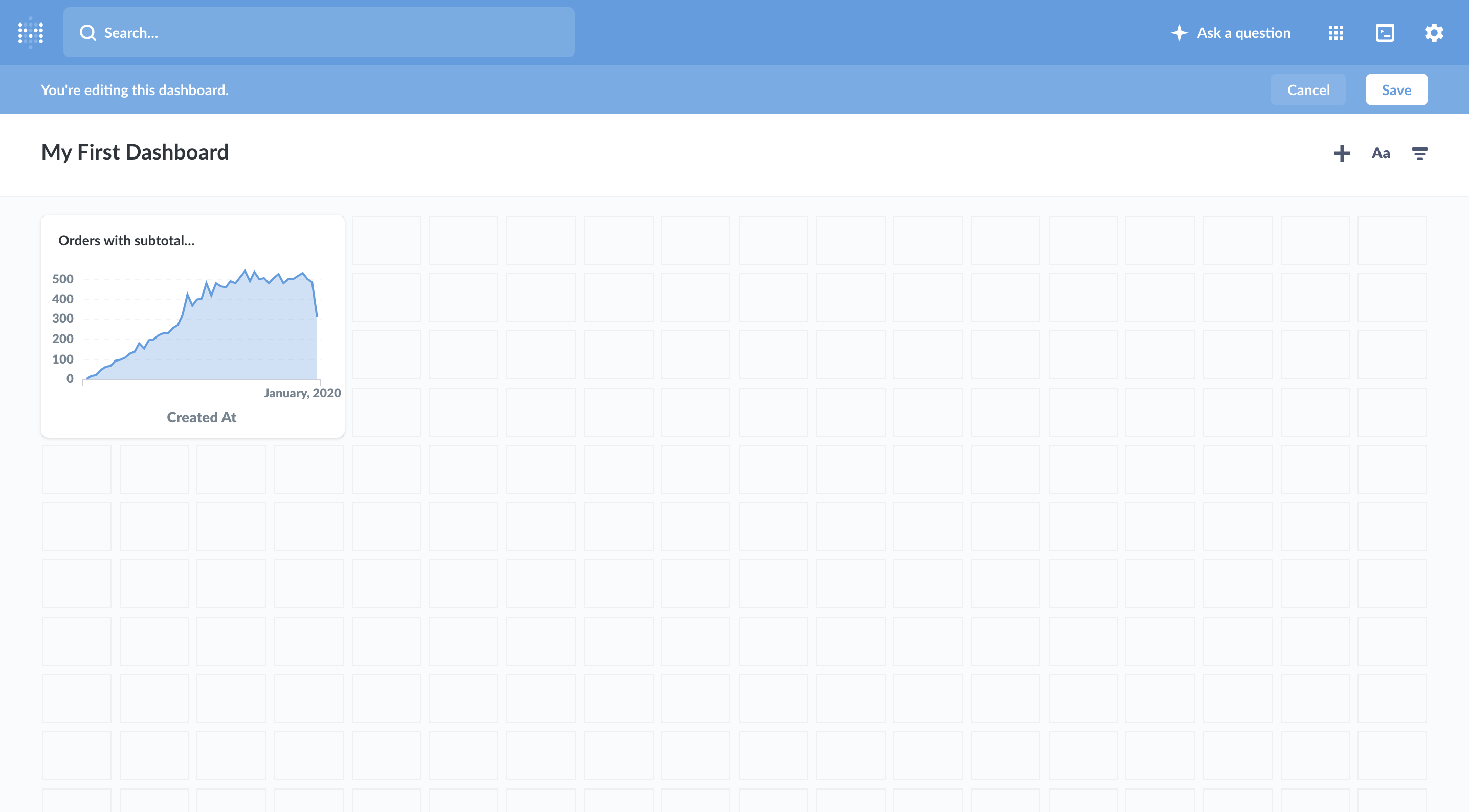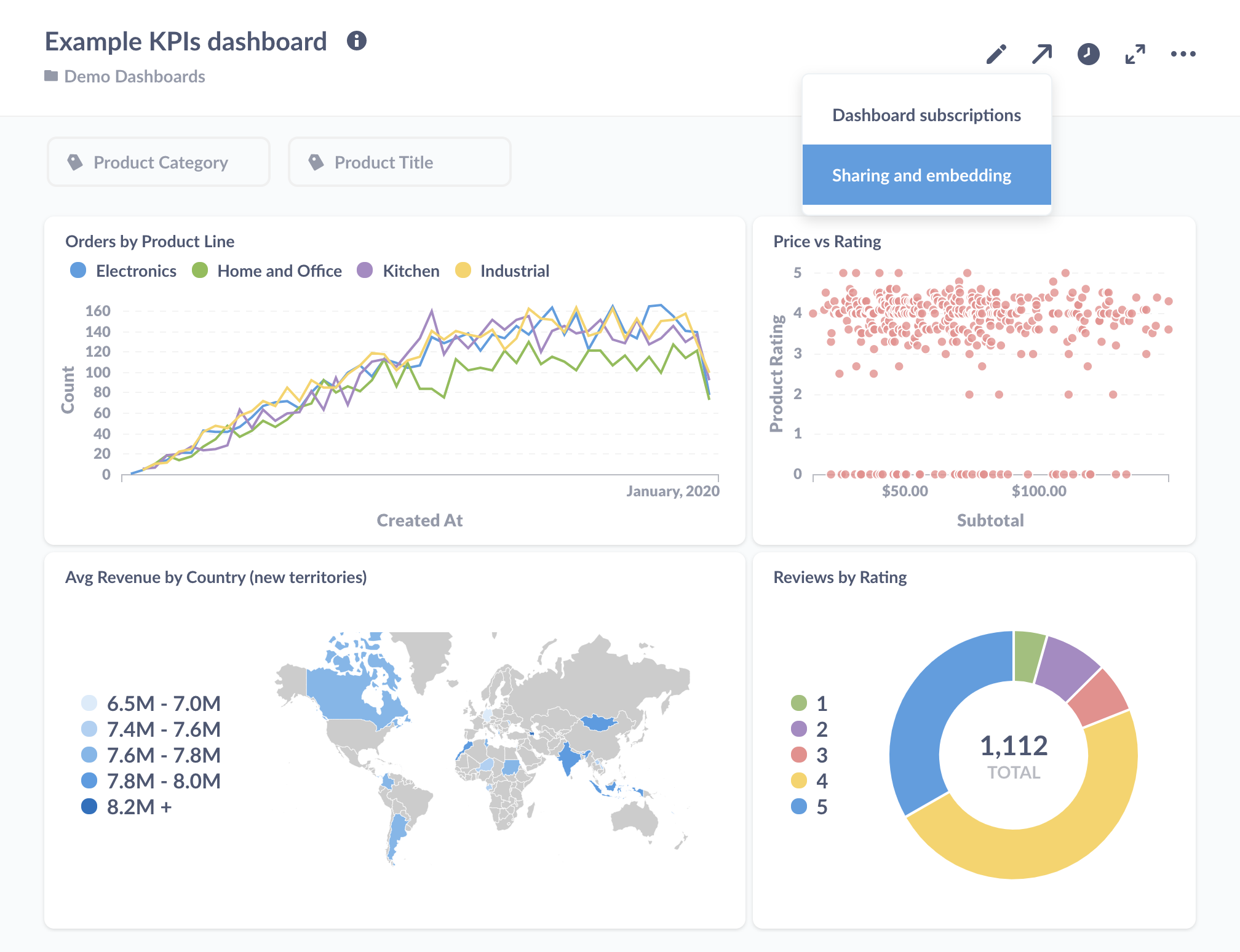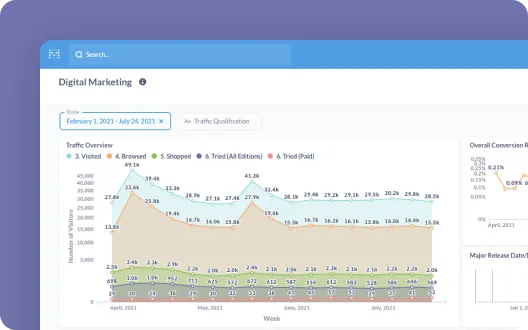
It’s great for team members that don’t speak SQL. Using the Notebook editor is an awesome way of executing SQL without writing SQL. This will visualize the same chart as we did before in the Cube Cloud Playground.

Summarize the Sum of CompletedCount by CreatedAt: Day.

Let's use the Notebook editor to ask a question. But, let’s move on to more complex topics, building a custom dashboard. Running an X-ray is an awesome way of hitting the ground running. Here’s a live preview of what this dashboard looks like. This will take you to an autogenerated dashboard. Self-service analytics with Metabaseīy far the most awesome feature in Metabase is the ability to X-ray a table and autogenerate a dashboard. By either using the Notebook editor to ask questions or Native queries, we can easily build a dashboard. Now you can run queries to Cube from Metabase. Make sure to enable the "Use a secure connection (SSL)" toggle. Then, enter the credentials as a new PostgreSQL data source in Metabase. So, with Cube, you can use native, syntactically correct SQL queries, similar to how you’d query a data source directly: Cube's SQL API is fully Postgres-compliant, enabling connectivity to Metabase and, actually, any downstream tool that works with Postgres. Cube exposes three APIs: REST API, GraphQL API, and SQL API. As a result, your Metabase dashboards will load in under a second. Performance. Cube provides a centralized caching layer which ensures consistent performance and data freshness across use cases or teams.As a part of that, Cube provides row-level security and multi-tenancy for Metabase users. Cube’s security configuration lets you manage who is able to access data and which data it is. Data modeling. With dozens of supported data sources and a centralized data model for defining metrics definitions, you can make sure every team has access to exactly the same data, in Metabase and beyond.Regardless of how many data sources (like Snowflake or Redshift) or data consumers (like Metabase) you have, Cube allows to get rid of siloed data pipelines.

Serving as a source of truth for the metrics definitions, access control rules, and caching settings, it solves the many-to-many problem many data teams have. Why would you want to have Cube in your data pipeline? Data consistency.Ĭube will deliver consistent data to all teams using Metabase. X-raying a table will antomagically generate a bunch of questions that slice the table’s records in different ways and save it as a dashboard.Ĭube is the headless BI platform for accessing data from modern data stores, organizing it into consistent metrics definitions, and delivering them to downstream applications. But, X-ray is by far the most amazing feature in Metabase. Or, use the search bar to find data, metrics, segments, dashboards, models, and questions. Collections organize questions, models, dashboards, and other collections.
#Metabase dashboards full
You can even embed the full Metabase app, which allows you to do things like delivering multi-tenant, self-service analytics.įind things and stay organized. You can share the dashboard by sending the URL to your co-workers, or by embedding them using iframes. You can add questions to a dashboard and include filters and connect them to fields on questions to narrow the results. Awesome if you're proficient with SQL!Įmbed charts and share your results. Choose between either the Notebook editor to ask sophisticated questions with joins, filters, and aggregations, or Native queries to compose questions in the database’s native query languages. Use the query builder to filter and summarize data. You can save questions, group them into dashboards, and share both questions and dashboards with the your team.

You can use Metabase to ask questions about your data, build self-service analytics, or even embed Metabase in your front-end data application to let your customers explore data on their own. It provides an easy way for everyone in your company to work with data like an analyst. Metabase is an open-source business intelligence platform with a low entry barrier, smooth visual interface, and generally pleasant user experience. In early December, we're hosting a webinar on replacing Looker with Metabase and Cube.
#Metabase dashboards code
Check out the live demo as well! If stuck, you can always refer to the source code on GitHub. Here’s what your Metabase dashboard will look like after we integrate it with Cube. Pairing it with Cube, the headless BI platform, will provide a consistent data model making it easy to build self-service analytics, shared across multiple teams. It’s the easy, open-source way to help everyone in your company work with data like an analyst. With Metabase as the business intelligence platform, your team doesn’t need to speak SQL.


 0 kommentar(er)
0 kommentar(er)
